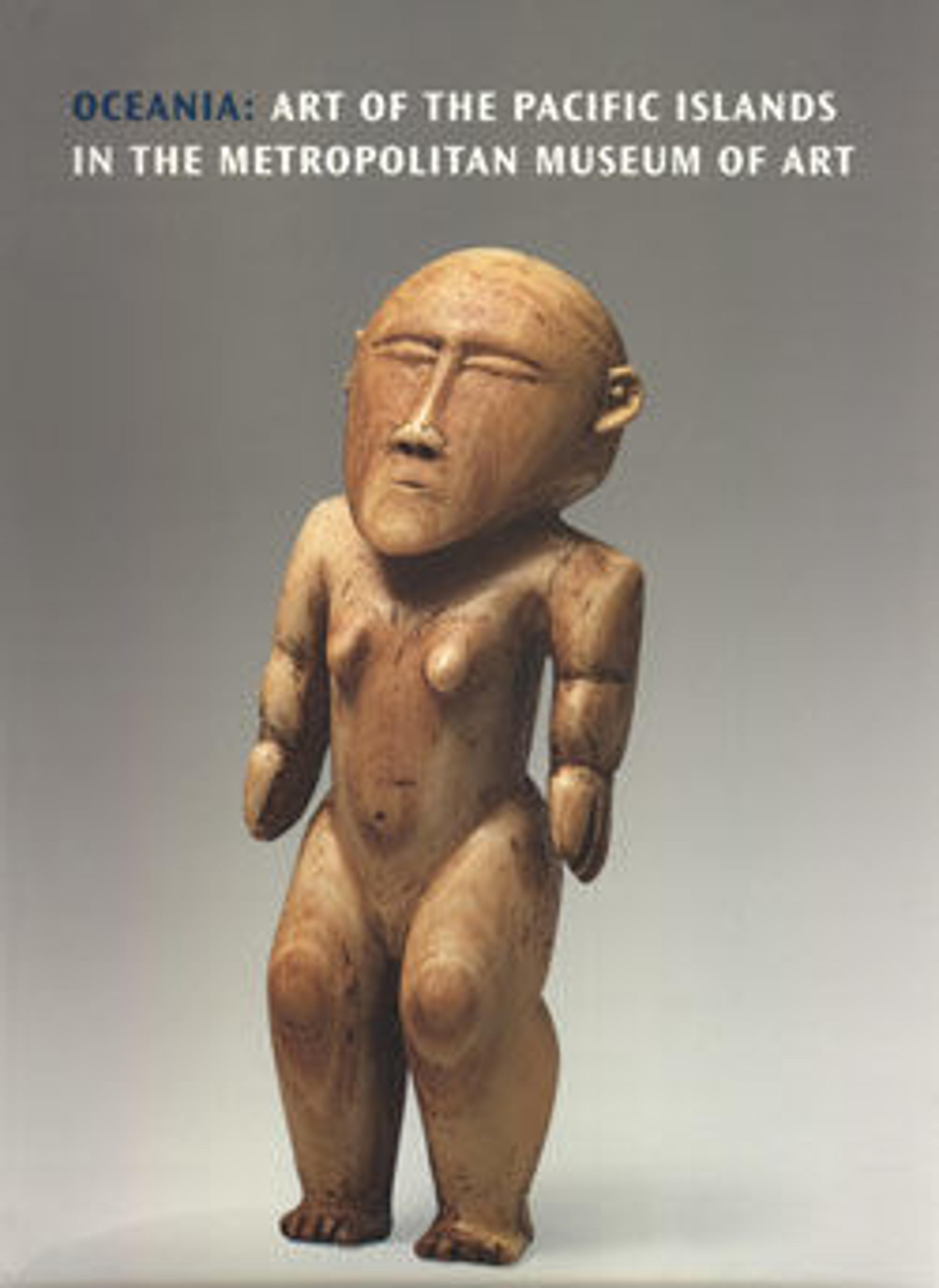Canoe Board (Gope)
The canoes of the Kiwai people of Kiwai Island and adjacent areas in the western Papuan Gulf were lavishly adorned. They were brightly painted and embellished with ornaments of shell and other materials. Kiwai canoes had a shield-like ornament above the prow that served, in part, as a splashboard, preventing water from entering the canoe. These prow ornaments frequently consisted of carved boards (gope) adorned with stylized human faces that possibly represented the totemic spirit associated with the individual canoe. Mounted with the carved image facing inward, gope had a protective function, safeguarding the crew and ensuring success in warfare or other endeavors. Removed from the canoes, gope served, more broadly, as guardians of the community. Displayed on the gables of the men’s communal longhouses, they were believed to protect the residents from sickness. Ideally, the boards were suspended from lengths of fiber, allowing them to twist freely in the air in order to face the direction from which the disease-bearing beings approached.
Artwork Details
- Title:Canoe Board (Gope)
- Date:late 19th–early 20th century
- Geography:Papua New Guinea, Fly River region
- Culture:Kiwai people
- Medium:Wood, paint
- Dimensions:H. 32 1/4 in. × W. 9 in. × D. 1 1/2 in. (81.9 × 22.9 × 3.8 cm)
- Classification:Wood-Sculpture
- Credit Line:The Michael C. Rockefeller Memorial Collection, Gift of Allan Frumkin, 1961
- Object Number:1978.412.768
- Curatorial Department: The Michael C. Rockefeller Wing
More Artwork
Research Resources
The Met provides unparalleled resources for research and welcomes an international community of students and scholars. The Met's Open Access API is where creators and researchers can connect to the The Met collection. Open Access data and public domain images are available for unrestricted commercial and noncommercial use without permission or fee.
To request images under copyright and other restrictions, please use this Image Request form.
Feedback
We continue to research and examine historical and cultural context for objects in The Met collection. If you have comments or questions about this object record, please contact us using the form below. The Museum looks forward to receiving your comments.
